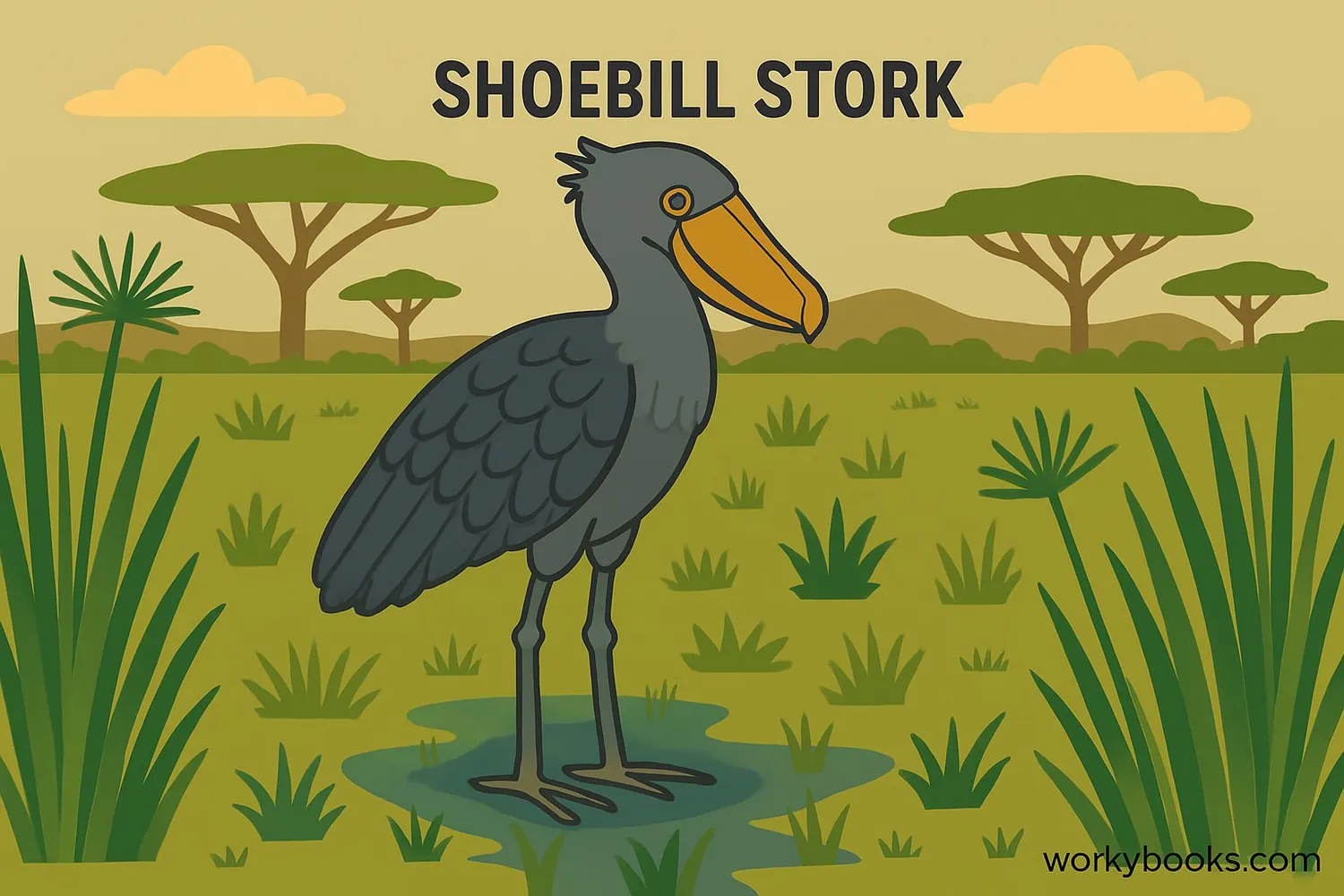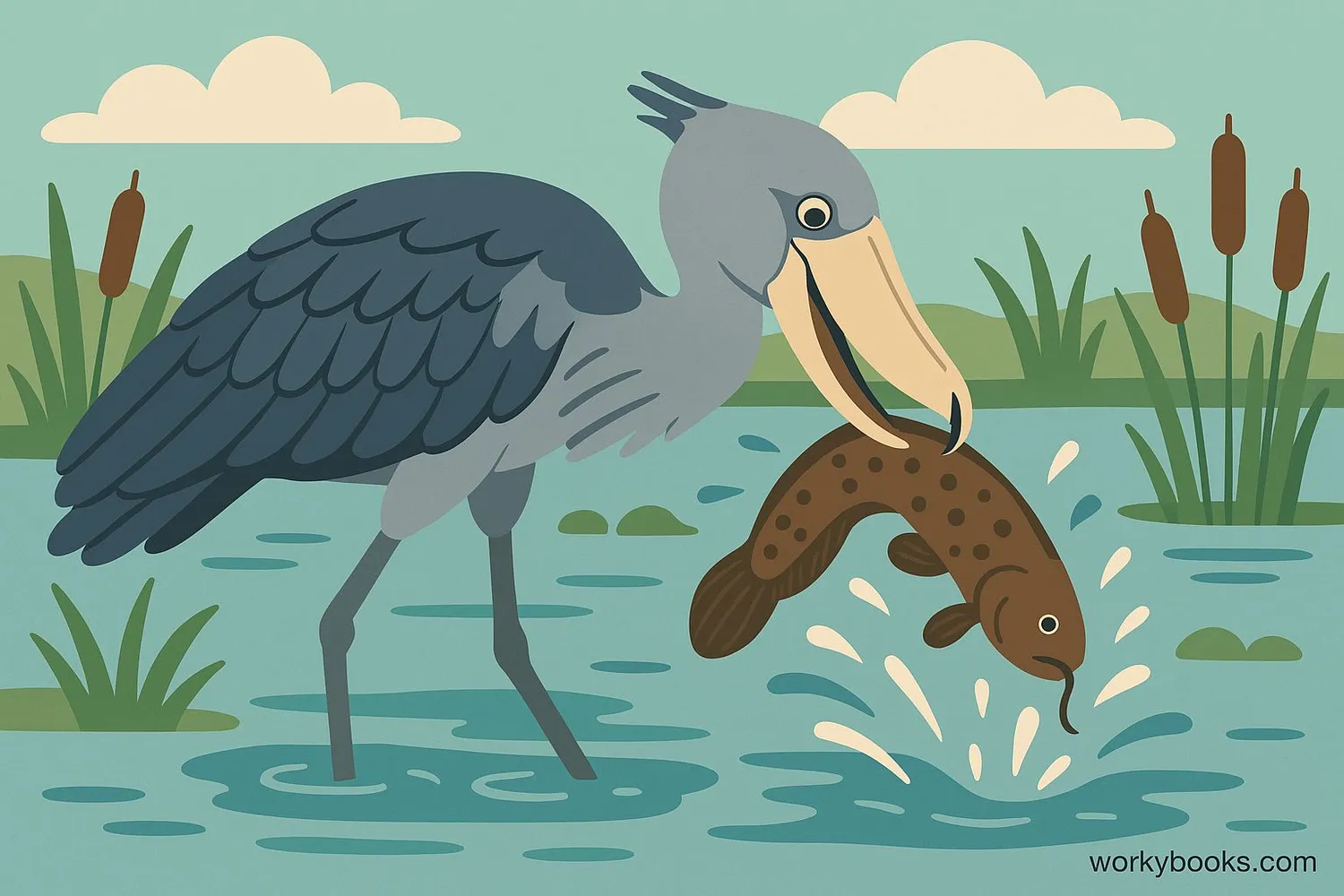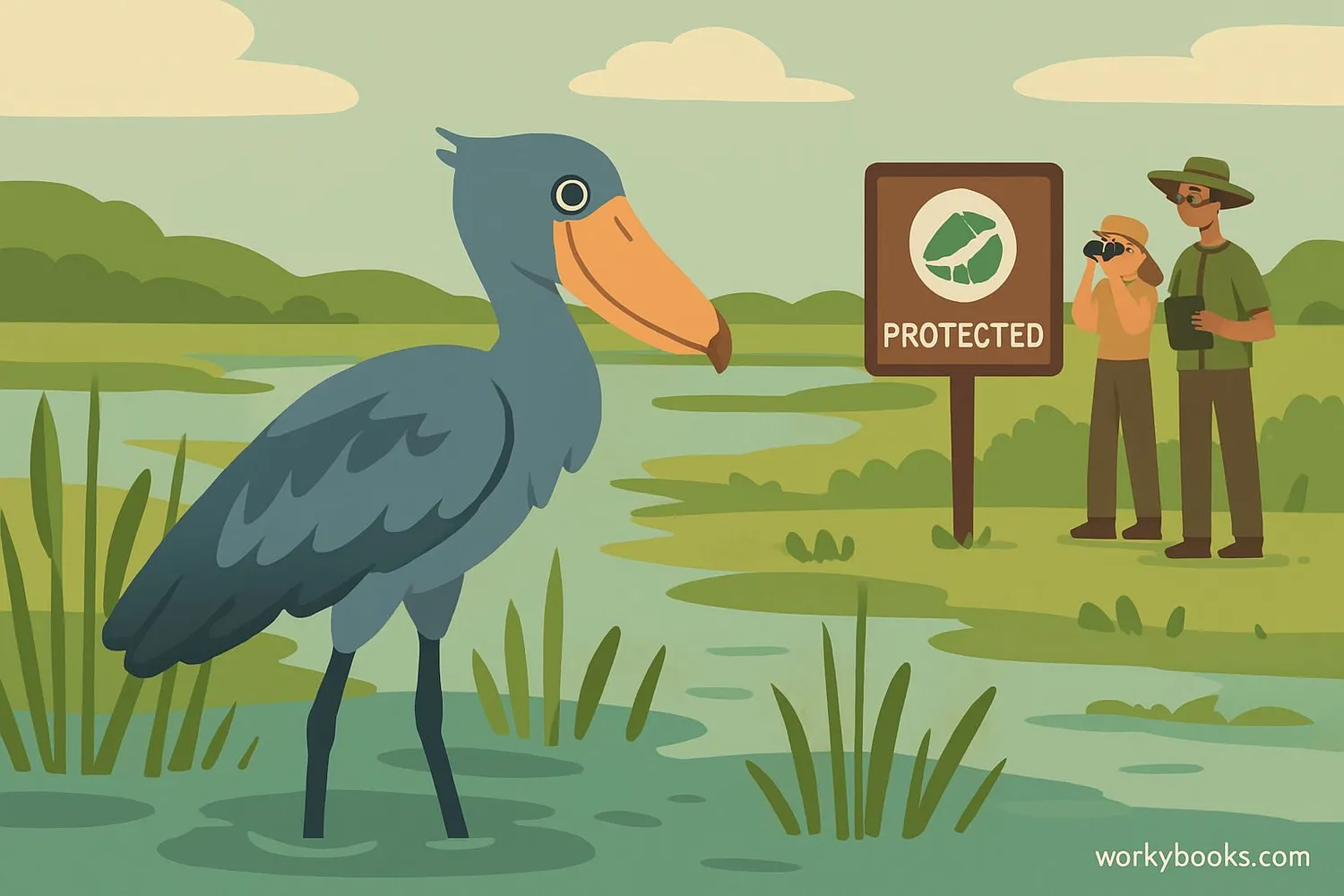Shoebill Stork - Definition, Examples, Quiz, FAQ, Trivia
Discover the fascinating prehistoric-looking bird from African swamps
What is a Shoebill Stork?

The Shoebill Stork is a large, prehistoric-looking bird found in the swamps of East Africa. It gets its name from its enormous shoe-shaped bill, which is one of the largest bird bills in the world!
Despite being called a stork, scientists believe Shoebills are more closely related to pelicans. They can grow up to 5 feet tall with an 8-foot wingspan, making them one of the tallest birds in the world. Their ancient appearance has earned them the nickname "dinosaur bird."
Science Fact!
Shoebill Storks can stand perfectly still for hours while hunting - this behavior is called "still hunting."
Unique Features

Shoebill Storks have several remarkable features that make them unique:
The Shoebill
Massive bill shaped like a Dutch wooden shoe
Size
Up to 5 feet tall with an 8-foot wingspan
Color
Blue-gray feathers with a fluffy crest
Eyes
Large, yellow eyes with excellent vision
Sound
Makes a loud "machine gun" clattering sound
The bill is the Shoebill's most impressive feature. It measures about 9 inches long and 4 inches wide, with a sharp hook at the end. This powerful tool helps them catch and eat large prey like lungfish and even baby crocodiles!
Habitat & Behavior

Shoebill Storks live in the freshwater swamps and marshes of East Africa, particularly in:
• Uganda
• Sudan
• Zambia
• Tanzania
• Democratic Republic of Congo
These birds prefer areas with floating vegetation where they can stand and hunt. They are mostly solitary birds and are very territorial, only coming together during breeding season.
Behavior Facts
Shoebills perform a unique "bowing" display when meeting each other. They also clatter their bills to communicate - a sound that resembles a machine gun!
Diet & Hunting

Shoebill Storks are carnivores with a diet that includes:
• Lungfish (their favorite food)
• Catfish
• Tilapia
• Snakes
• Frogs
• Baby crocodiles
• Turtles
Their hunting technique is remarkable. They stand perfectly still in shallow water for long periods, waiting for prey to surface. When they spot something, they collapse forward with incredible speed, using their bill like a spear to catch their meal.
Hunting Power!
Shoebills can decapitate large fish with their sharp bill before swallowing them whole!
Conservation Status

The Shoebill Stork is classified as Vulnerable by the International Union for Conservation of Nature (IUCN). There are only about 5,000-8,000 Shoebills left in the wild.
Major threats include:
• Habitat loss: Draining of swamps for agriculture
• Hunting: Captured for the illegal pet trade
• Disturbance: Human activities near nesting sites
• Climate change: Altering wetland ecosystems
Conservation efforts include protecting wetland habitats, monitoring populations, and educating local communities. Places like Uganda's Mabamba Swamp have become important ecotourism sites that help protect Shoebills.
Shoebill Stork Quiz
Test your knowledge about these amazing birds with this quiz!
Frequently Asked Questions
Here are answers to common questions about Shoebill Storks:
Fun Shoebill Stork Trivia
Discover some amazing facts about Shoebill Storks!
Living Dinosaur
Shoebills are often called "dinosaur birds" because of their prehistoric appearance. Their closest living relatives are pelicans, but their lineage dates back millions of years!
Machine Gun Call
Shoebills communicate by clattering their bills together, creating a sound remarkably like a machine gun firing! This unique call can be heard from far distances in the swamp.
Fierce Hunters
These birds are so powerful they can catch and eat baby crocodiles! Their sharp bill can decapitate large fish before swallowing them whole.
Water Regulation
Shoebills have a special way to stay cool - they defecate on their own legs! This unusual behavior helps regulate their body temperature in hot swamp environments.


